Expert’s Rating
Pros
- Blazing fast performance
- Tandem-OLED display is stunning
- Plenty of support for creative apps
- Excellent redesigned Magic Keyboard
Cons
- iPadOS still less suitable for productivity than macOS
- Some thermal issues
- Expensive
Our Verdict
With a gorgeous tandem-OLED display, a powerful M4 chipset, a portable form factor, and optional cellular connectivity, the iPad Pro M4 is the best premium tablet you can buy in 2024. However, the limited nature of iPadOS and the tablet’s price should give you pause.
Price When Reviewed
This value will show the geolocated pricing text for product undefined
Best Pricing Today
Price When Reviewed
$999 (Wi-Fi only)
Best Prices Today: Apple iPad Pro 11-inch (M4, 2024)
Apple’s iPad Pro M4 (2024) might seem like a spec bump, as the iPad Pro M2 (2022) was plenty fast and capable. However, the new iPad Pro packs a slew of crucial upgrades, and the blazing-fast M4 chip isn’t even at the top of the list.
A colourful and bright tandem-OLED display, 256GB of base storage, a horizontally-positioned front-facing camera, and a thinner chassis all prove to be more impactful than the speed boost in daily use.
The iPad Pro M4 is still expensive, starting at £999/$999 for the 11-inch model and £1,299/$1,299 for the 13-inch variant. With that being said, it’s actually a better value for UK buyers this time around. The 13-inch iPad Pro M4 costs just £50 more than the iPad Pro (2022) did at launch while offering double the storage.
After months of using the iPad Pro M4, I can safely say it’s the first tablet that can completely replace my Mac. On the flip side, needing to pay premium laptop prices for an iPad is still a tough sell — especially when a last-generation iPad Pro might do just fine.
Design & Build
- The thinnest Apple product ever
- Camera bump is now enclosed in aluminum
- Colour and finish options are still limited
For 12 years, the seventh-generation iPod nano remained Apple’s thinnest product ever. Now, that groundbreaking device has been usurped by the 13-inch iPad Pro M4, which is just 5.1mm thick. Even the thicker 11-inch variant measures only 5.3mm. Contrary to popular belief, the iPad Pro really did need to be thinner.
Using the past few generations of iPad Pro, thickness wasn’t an issue while using the tablet on its own. The second an iPad Pro is paired with a keyboard case or a folio cover, though, it becomes an unwieldy device.
The thinner chassis makes a real difference, and so does the lighter build. The 13-inch iPad Pro M4 weighs just 579 grams, which is nearly a 100-gram decrease from the 682-gram 12.9-inch iPad Pro M2.
For comparison, the Samsung Galaxy Tab S10 Ultra is 5.4mm thick and 718g.
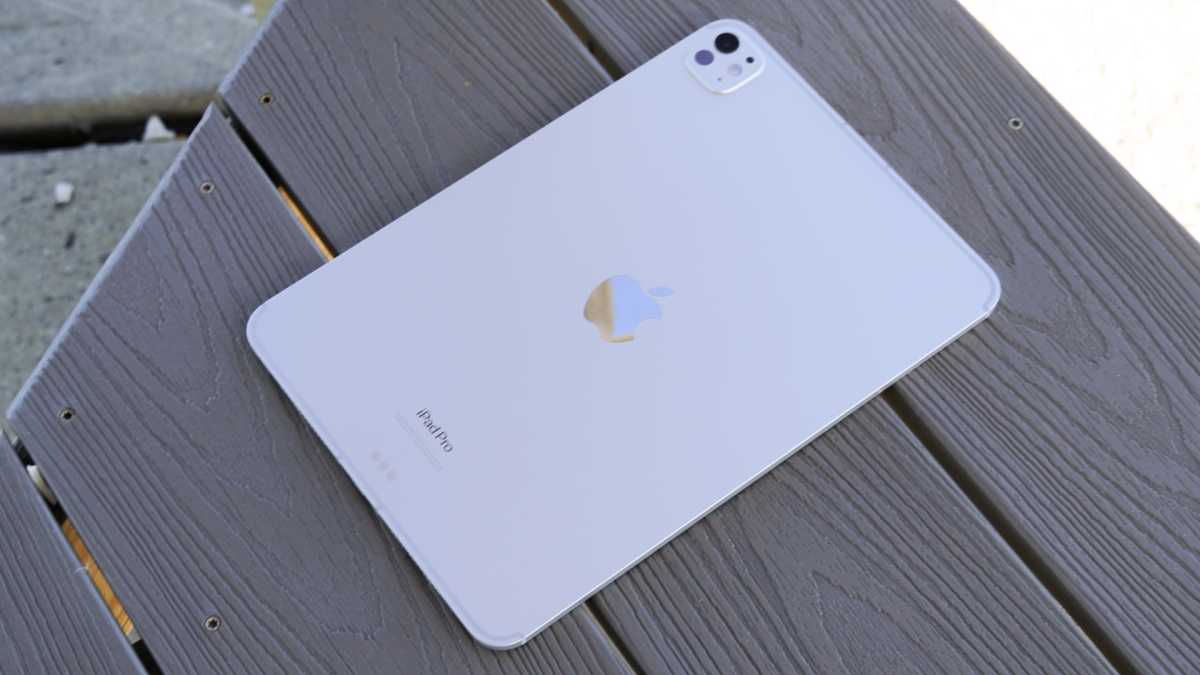
Brady Snyder / Foundry
The glass camera covering is removed, enabling the iPad Pro’s sloping, unibody aluminoum design. It looks premium but is more functional now that the unnecessary camera bump glass is removed. The camera bump itself is smaller, too, and that means the iPad Pro M4 has less wobble on a table.
Your experience with the iPad Pro M4 as a portable device will largely depend on whether you buy the 11- or 13-inch model. I tested the former, and although it’s functionally identical to the larger version aside from minor dimensions and screen size changes, it changed the way I used it.
Compared to my 12.9-inch iPad Pro from 2018, the smaller iPad was easier to use in my lap, in the car, and anywhere, really.
The display bezel is still the perfect size for your hands to comfortably grip without obstructing its viewable area. Finally, the Face ID and front-facing camera sensors are positioned for use in landscape mode. Since most iPad Pro users work with keyboard cases or folio stands, this is ideal for video calls and the like.
I tend to prefer the implementation of Touch ID on the iPad mini to Face ID on the iPad Pro, but I’m in the minority here.
For most people, this method will be ideal for basic unlocking, authorizing purchases with Apple Pay, and accessing locked or hidden apps. Unfortunately, the horizontally-positioned cameras and sensors pose a compatibility issue for Apple Pencil, which we’ll get to later.

Brady Snyder / Foundry
On the back, the Smart Connector facilitates connection with keyboards. There’s a wireless charging pad on the side for the Apple Pencil Pro and a USB/Thunderbolt 4 port on the bottom.
Screen & Speakers
- Finally, an iPad Pro with OLED
- Tandem-OLED makes for brighter and better colours
- Quad-firing speakers sound great for a tablet
Apple has a reputation for waiting until technology is mature before introducing it, and that’s exactly what it did with the iPad Pro M4. It turns out that Mini-LED on past iPad Pro models were just a stopgap before tandem OLED, the technology within the iPad Pro M4, was ready.
No, Apple didn’t invent tandem OLED – there were many products with the tech released before and after the iPad Pro M4. However, it did make it mainstream with this iPad model.
In simple terms, a tandem OLED display stacks two traditional OLED panels, allowing for higher brightness levels without the loss of pixel density or colour accuracy. It also minimizes the risk of OLED burn-in and is more efficient than a single, high-power OLED panel.
simply on another level… the best iPad display ever
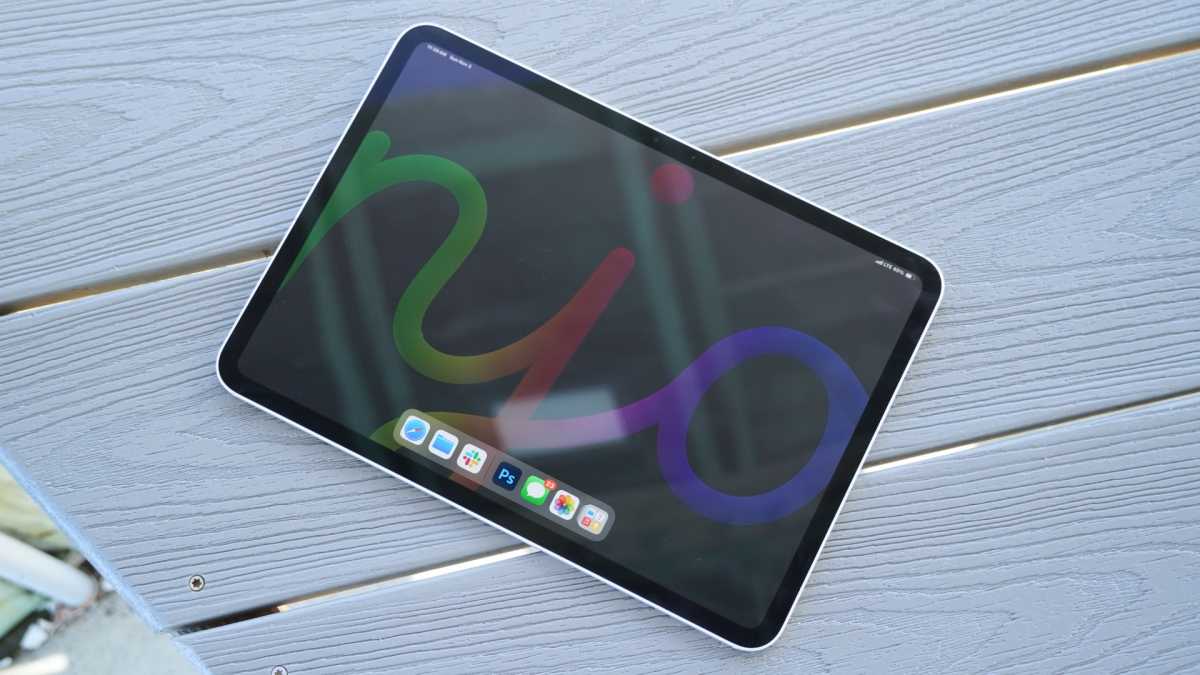
Brady Snyder / Foundry
The Mini-LED screen in the iPad Pro M2 was fantastic, but it could not provide true blacks and suffered from blooming effects under certain circumstances.
The tandem-OLED screen in the iPad Pro M4 is simply on another level. It’s the best iPad display ever, eliminating the pitfalls of the last-gen Mini-LED panel while providing DCI-P3 colour support and a two-million-to-one contrast ratio.
Brightness is usually a compromise that comes with tablet-sized OLED panels, but not on the iPad Pro. You get 1,000 nits full-screen brightness and 1,600 nits peak brightness while watching XDR content. Whether you are typing up an email or watching a Paramount+ original, this display is stunning.
The speakers and microphones are still a key perk of buying an iPad Pro over a Samsung Galaxy Tab.
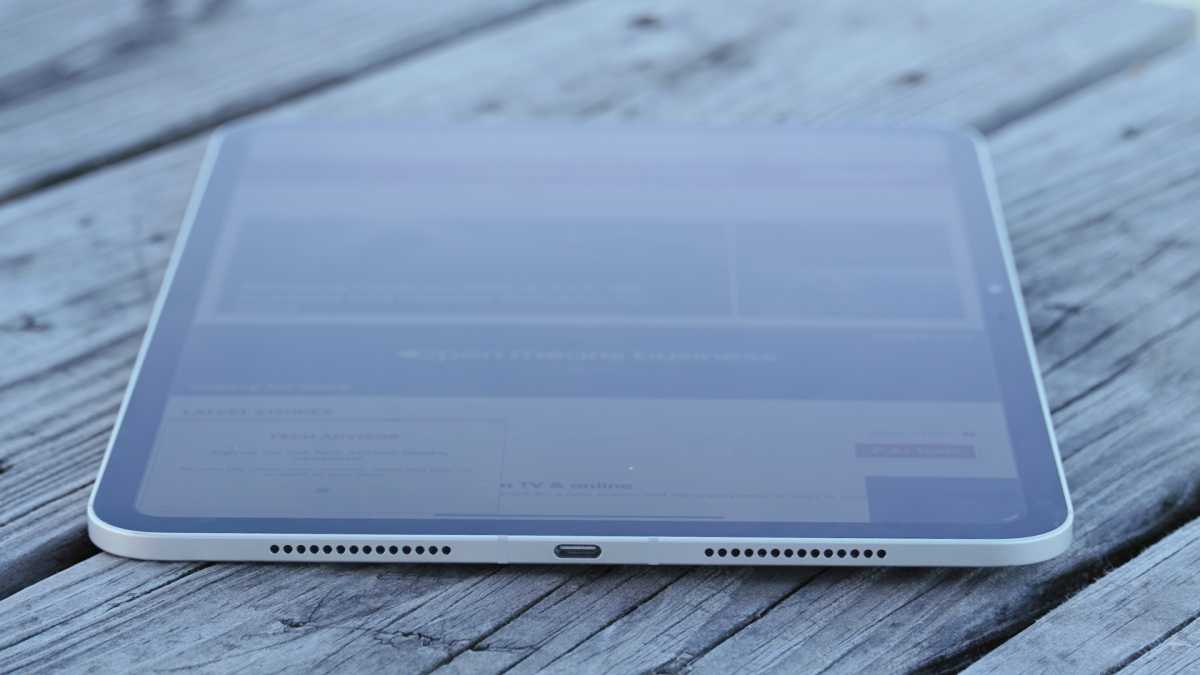
Brady Snyder / Foundry
The iPad Pro M4 has a quad-speaker array that sounds fantastic, as long as expectations are kept reasonable.
Videos and shows sound incredible too, but don’t expect tons of bass while listening to music. Apple calls the iPad Pro’s four microphones “studio-quality,” just like the ones on the iPhone 16 Pro and MacBook Pro.
Accessories
- The new Magic Keyboard is wonderful
- There’s an Apple Pencil Pro, too
- You can’t use a second-gen Apple Pencil
Apple didn’t just overhaul the iPad Pro M4 this year; it also released a brand-new stylus and keyboard to pair with it: the new Magic Keyboard (£300-350) and Apple Pencil Pro (£129).
It finally includes a function row, which was a huge oversight of the original
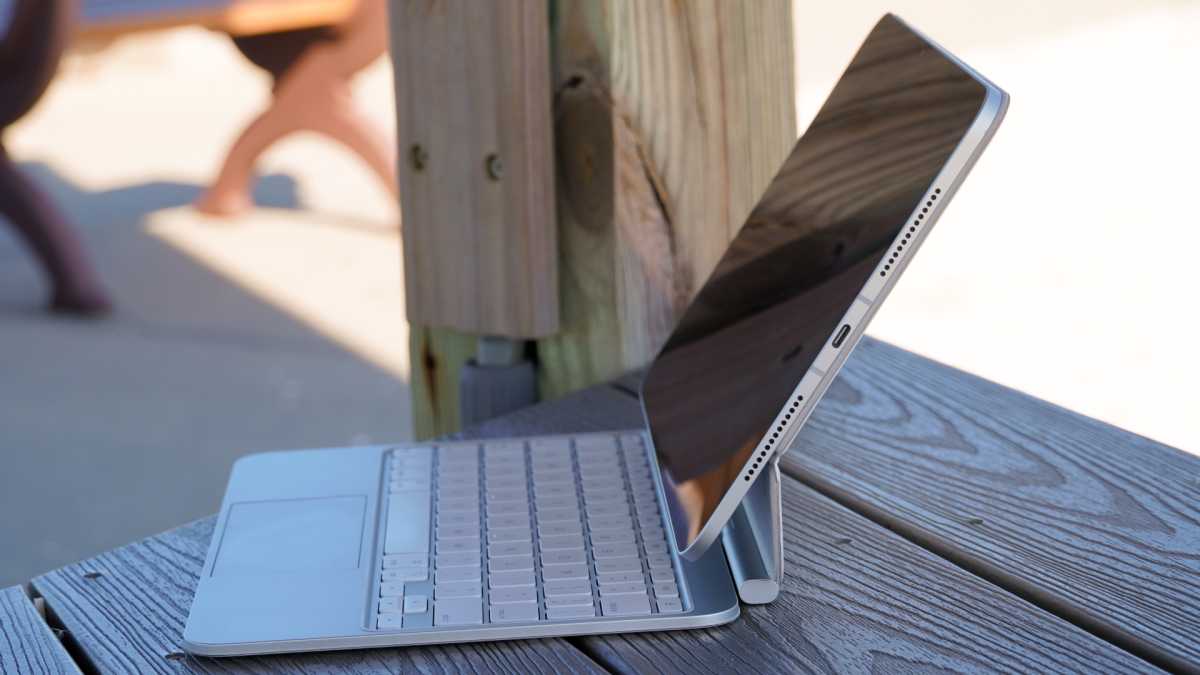
Brady Snyder / Foundry
As someone who found the original Magic Keyboard to be underwhelming, I’m impressed with the refreshed model.
It finally includes a function row, which was a huge oversight of the original. The floating, top-heavy design of the Magic Keyboard is still here. However, with the iPad Pro M4 lighter and the Magic Keyboard’s weight shifted, it’s much easier to use this version on your lap.
Additionally, the palm rests are now made of aluminium and the trackpad is glass, supporting haptic feedback. This is the Magic Keyboard that Apple should’ve made in the first place, and it now feels like a premium accessory that can command a high price tag.
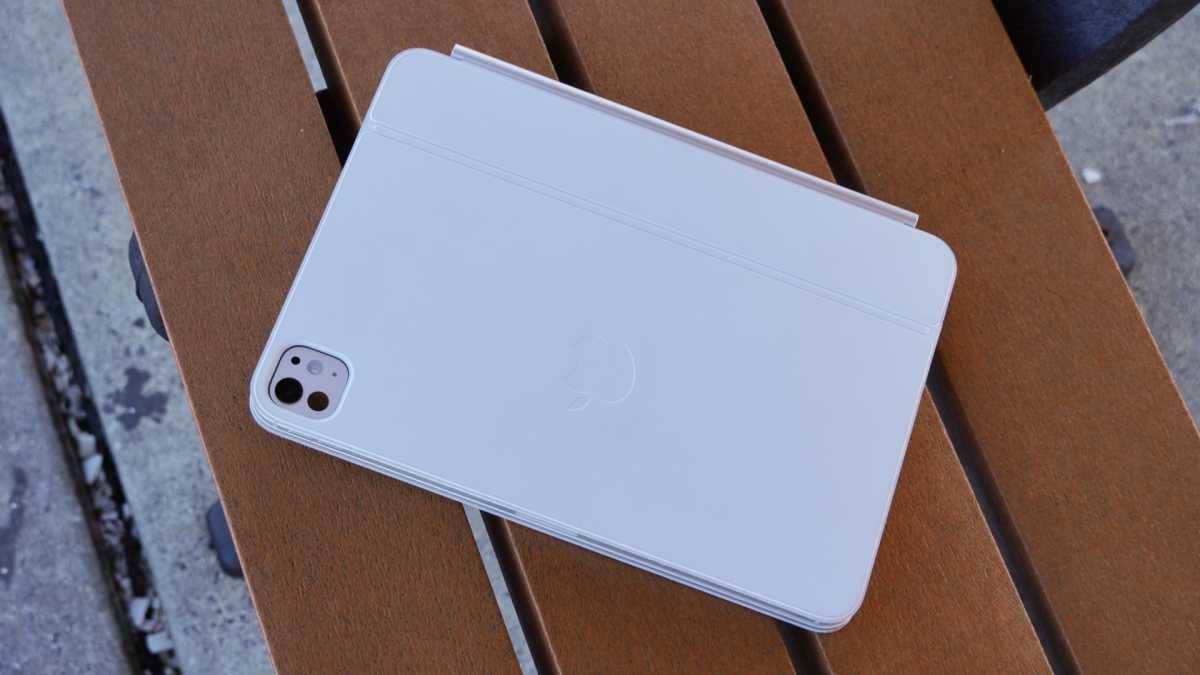
Brady Snyder / Foundry
With the introduction of the Apple Pencil Pro, the company now sells four Apple Pencils that work with various iPad models.
It’s a convoluted experience for customers, and unfortunately, iPad Pro M4 users can’t use the second-gen Apple Pencil they might already have with their new device. The landscape front-facing camera likely forced Apple to change the position of the magnets and chargers, making that Apple Pencil incompatible.
Apple Pencil Pro is like all the other Apple Pencils, but with more features. You get classic tools like double tap and hover, plus extras like squeeze and barrel roll.
This model also has Find My support, so it’s easier to locate if it gets lost. In all, Apple Pencil Pro and iPad Pro are likely the best stylus/tablet combo for artists not made by Wacom.
Performance & Software
- M4 is ridiculously powerful
- Plenty of pro-level creative apps available
- iPadOS could still be better for multitasking and productivity
The iPad Pro M4 is now the third iPad Pro to sport a desktop-class chip. By now, there are diminishing returns.
Yes, the M4 chip is faster than M2, which was faster than M1 – go figure. In daily use, though, it’s unlikely that you will notice a speed difference between an iPad Pro M4 or M2.
More than ever, the power of the iPad Pro you buy will depend on how much storage you select. iPad Pro M4 models with either 256- or 512GB of storage will have an M4 chip with a 9-core CPU and 10-core GPU. You get a 16-core Neural Engine for Apple Intelligence and 8GB of RAM, too.
Upgrade to the 1- or 2TB versions, and the M4 chip in the iPad Pro will have a 10-core CPU, 10-core GPU, 16-core Neural Engine, and 16GB RAM. It’s a pricey upgrade that could make an iPad Pro M4 cost as much as £600/$600 more.
I never felt it slow down
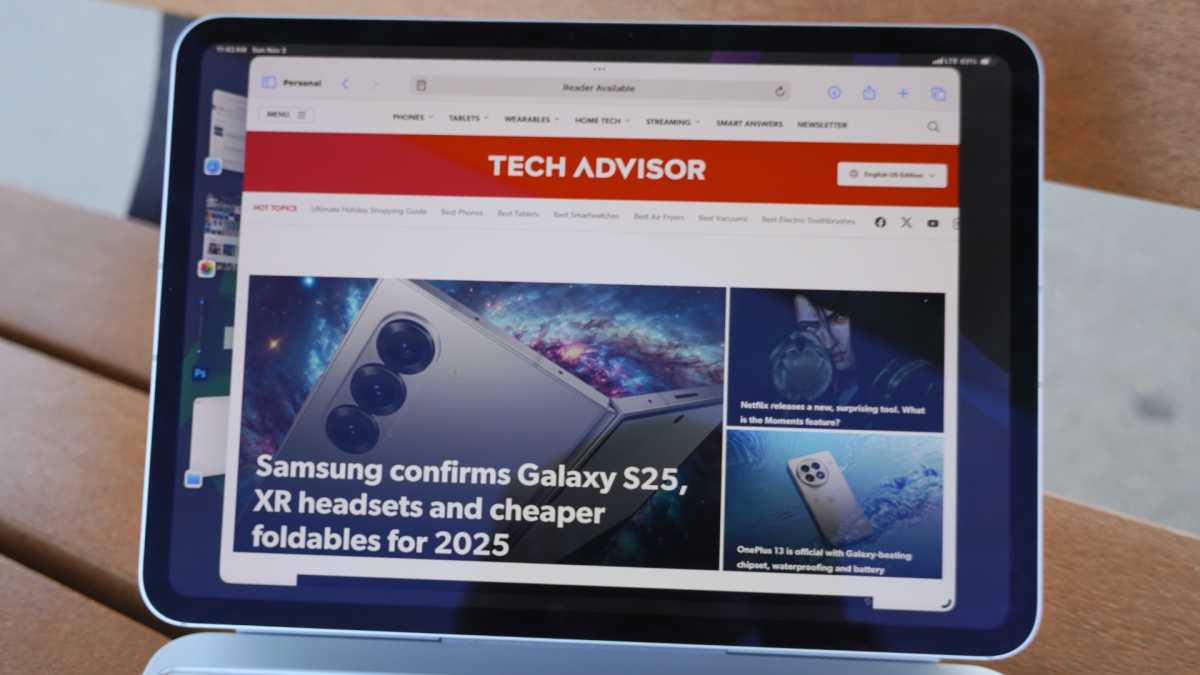
Brady Snyder / Foundry
The speed boost does lead to increased performance. In three Geekbench 6 benchmark trials, the iPad Pro M4 averaged a 3,764 single-core score and a 13,344 multi-core score. For reference, iPad Pro models with an M2 chip often record multi-core scores under 10,000 points in Geekbench 6.
The question is not whether the iPad Pro M4 is faster – it absolutely is. It’s whether you’ll see that performance or not while using the tablet.
In all my time with the iPad Pro M4, I never felt it slow down. There were software bugs here and there, and the iPad got hot to the touch under extreme workloads, like photo and video editing. Additionally, there were a few times when the iPad Pro’s screen brightness would drastically decrease due to overheating.
With all that being said, I never saw the iPad Pro M4 hang up or slow down due to a lack of power.

Brady Snyder / Foundry
That could be viewed as a good or bad thing, depending on how you look at it. The great news is that if you buy an iPad Pro M4 you’ll be getting a blazing-fast machine. The problem is that you’ll always be wondering if there’s power within your device just waiting to be unlocked.
Outside of a few creative apps, such as Photoshop, Lightroom, Final Cut Pro, and Logic Pro, there aren’t many programs that maximize the M4’s full potential.
The iPad Pro M4, and iPadOS 18, is fantastic for artists, creators, and students. You can get by using the iPad as your only computer if you rely on creative software and web apps entirely.
However, iPadOS can be frustrating. Stage Manager is a decent way to multitask on a touch-first operating system, but it has been virtually unchanged since it debuted in iPadOS 16. In general, iPadOS 18 is a lacklustre update that feels like a missed opportunity to let people unlock their iPad Pro M4’s capabilities.
Battery Life & Charging
- 10 hours of battery life
- Slow charging speeds
- Excellent real-world battery performance
The iPad has long touted 10 hours of battery life while web browsing, and the iPad Pro M4 is no exception.
Both sizes are advertised as lasting 10 hours during video playback or web browsing. In a real-world test streaming YouTube with the display at 50% brightness for one hour, my iPad Pro M4’s battery life dropped exactly 10%.
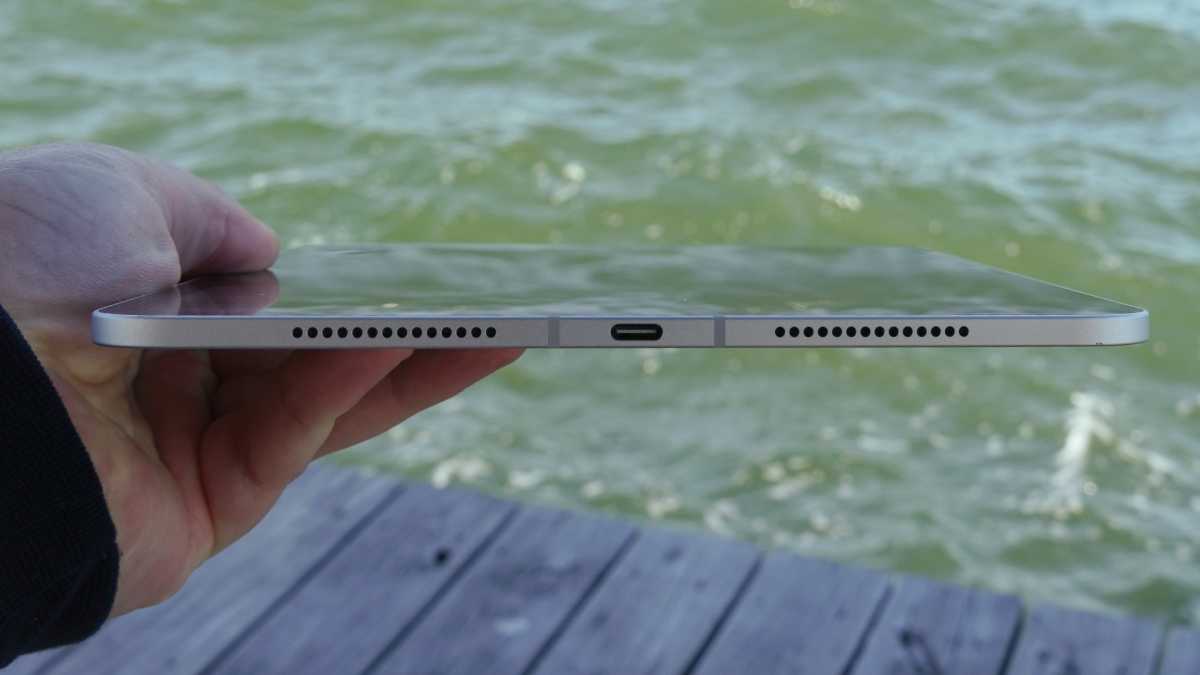
Brady Snyder / Foundry
That’s right in line with Apple’s claims and matches my stellar experience with battery life over months of use. Impressively, the cellular model still supports 9 hours of battery life, despite cellular connectivity consuming significantly more power.
Unfortunately, the iPad Pro still charges very slowly. It’s limited to between 20W and 30W wired charging speeds, numbers that the best OnePlus phones put to shame.
Pricing & Availability
The iPad Pro M4 starts at $999 for the 11-inch model and $1,299 for the 13-inch model in the US. The base model iPad Pro nets you 256GB of…
